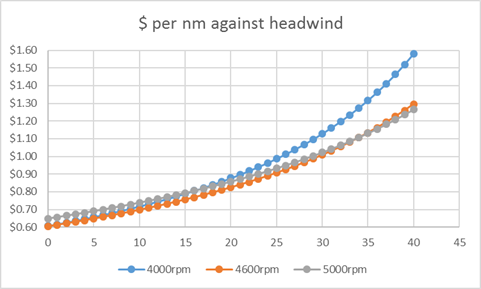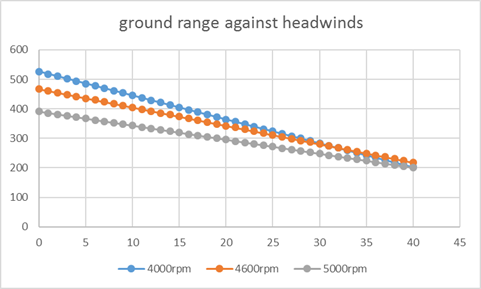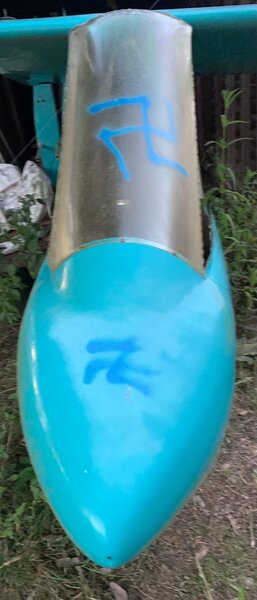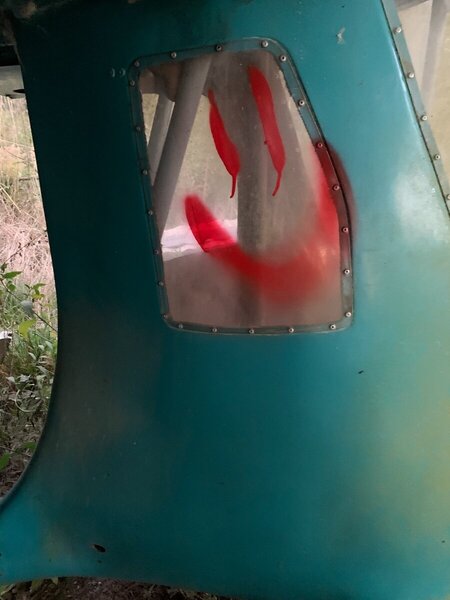-
Posts
2,674 -
Joined
-
Last visited
-
Days Won
32
Content Type
Profiles
Forums
Gallery
Downloads
Blogs
Events
Store
Aircraft
Resources
Tutorials
Articles
Classifieds
Movies
Books
Community Map
Quizzes
Videos Directory
Everything posted by kasper
-
Yes and no. The quick table I put through with fixed costs added ($20/hr) takes account of time and fuel burn. The other way to look at it is to graph the cost per NM travelled over the ground against the headwind for the three power settings to see the difference: As can be seen up to around 20 knts headwind power is making bugger all different to $/nm but after 20 knts the low power setting becomes quite a lot more expensive. But again ... who wants to be flying for 'fun' in more than 20knts of wind? Plus its generally a plannable distance vs headwind that is more the problem for ultralights ... with a fixed fuel available of 90L in a foxbat the real importance is how far you can get on your endurance ... lets leave 9L for reserve and look at 81L ... This shows that lowest power will give you longest plannable range for all headwinds up to 25knts ... but who wants to be doing that as you are up there for longer to get there and I really prefer to run my engines in a higher cruise power setting as temps stay nicer and I have a better flight ... my bladder will not hold out comfortably for 5hrs to go 400nm at 85 let alone 5hr20 to do the same at 75 ... with more than 40L in the tank I am really looking at how many legs in total before I have to refuel on tankage and just fly legs that suit my need for fun and my requirement to be comfortable between hamburgers and toilet stops.
-
If you like I have pushed your fixed data through my planning sheet based on what you have. I plan only 100hrls and engine replacement and I have guessed the cost of a 912i nil wind = 4600rpm wins on cost/nm just over the 4000rpm 30kn headwind = 4600rpm wins on cost just over the 5000rpm Were this me I all I do is ignore the $/nm and work from cruise power setting and work out if I can get there with planned winds and available fuel. For example, My 912 trike has a std 80hp 912 and is drag limited so I am only able to run 4,300rpm and get 11lph for 60knts - any more revs and I see rapidly declining return in speed for the fuel due to drag. So I am always looking at my distance based on 3.5hrs fuel (plus reserve) in the two seat configuration which limits me to 210nm still air planned if I take a passenger Any more and I have to ditch the passenger and install 'George' the fuel tank in the rear seat ... adds 6hrs to my fuel so I can then plan up to 570nm still air.
-
Powered hangliders are under 70kg and not registered a aircraft etc but use is subject to SAFA - the new hgfa - see CAO95.8
-
Whilst I really have a beef with the costs and direction of raaus I lived through the wild days of no-licence ultralights in OZ and the outcomes that resulted. Training is a need. Full stop. the areas that I am concerned with are the control of ops. The choices are the likes of CASA or an industry group. we have muddled along with AUF and RAAus for over 30 years as the training and control body and whilst they have been problematic - esp in terms of advocating for and change and enforcing control on behalf of CASA - it’s a tension but the training and certificate requirements in OZ have been largely effective
-
Still brings a smile to my face to remember the T300 I first went for a TIF in back in Dec 1986 over in SA ... blood ran a bit cold when the instructor nearly fell into the prop when pull starting the 503 with me strapped in ... but after we were in the air the Thruster was and remains the bees knees of Australian ultralights ... Drifters are fun and the Lightwing is comfy but the Thruster had my heart from that day.
-
Hmmm From the T300 I used to fly, the T500 I owned and the T600s in the UK I used to fly I am at a loss to understand the problem unless you cannot lift your arm and look back at the sight tube through the cutout in the centre of the cabin back. In all of the Thruster two seaters I owned/flew there is a clear Perspex insert in the rear of the cabin through which I could see the sight tube that ran up the centre of the tank. On mine I marked the ground attitude fuel on one side and inflight levels on the other ... and marked them Ground and Flight. All I needed to do was lift my arm and look back under the armpit to see the fuel state. Always ran a fuel log on the flight plans but used the sight tube to confirm/amend actual to plan as required. Quite important in the T600's when you are flying around the UK and into/out of military airspace as you often got held or flown around the houses to get around them so fuel planning became more critical. Here in OZ the majority of my Thruster flying was just local pootling around for an hour or so without any plans other than to go have some fun so I just ran from full tank and refilled to full after each flight.
-
Might explain my preferred route Cowra-The Oaks being via Goulburn and Mittagong 👍. Never been over Katoomba in a aircraft I was responsible for flying. my worst was in a weight shift crossing the Loire valley heading into Chartres. Neg G is a no-no in them but I went there many times that day. Got on the ground and lay on The grass for half an hour next to the plane.
-
Kfm 107 Hirth f23 Wae 342 I have all of these with and without belt redrive and all are lovely to run at power. The WAE are direct drive only and are rough and rock at idle but all with redrive are fine even at idle.
-
Which is why flat twins of the two stroke cycle work better with belt redrive than a gearbox. I have a good 38yo flat twin giving 28hp that runs nicely and gets new belts every 100 hrs. My 50hp belt drive flat twin is only 10 hrs in use but equally runs nicely and I'll keep an eye on it over the next 50+ hrs to see how it plays out. The 22hp Direct drive twins I have are ex drone and are short life engines spinning only 38" props but the three I've flown have been as expected. I don't think flat twin 2strokes are a problem
-
Dmotor want to deal with OEM only or sell a full install kit to you or fit the engine themselves. I guess they know the best way to get a bad repnis to have random installs that cause problems and get bad word of mouth. verner were lovely. But they discontinued all radials under 85hp so they are not single seat options. other radials exist of course like the Australian one in development. And that says it all really. In development is 99 out of 100 times shorthand for never sees the light of day.
-
Jack - Any Hummel build from any set of drawings or plans or parts kits are perfectly acceptable to raaus and just need to be registered under 95.55 not 95.10. They will get 19- reg and it’s a straight forward process. spacey has a 23yo grudge against how he was treated in his Hummel when he was going under 95.10. I have offered for no charge to help spacey get his airframe registered under 95.55 if he wants. this offer stands to him as it has for the past 4 years.
-
You cannot really do much on a 2 seat thruster as you call under MARAP ... and the Tech manager will have to approve it and you will have to do all the design, manufacture, fit and test at your cost PLUS pay the MARAP fee. If you are considering a single seat thruster then fill your boots - you are the designer and responsible for any changes you make - rocket, spring, hand deployed - soft pack canister the choice is yours alone. BUT - expect a fight with RAAus Tech on what the process is to change a 95.10 to fit the pack unless you want to follow processes and incur costs that are not legit - but that fight is still to be lost by RAAus on the unsupported legal basis for the tech manual changes to 95.10 mods and maintenance.
-
R912 into a thruster has been done but never certified. It’s not a pretty plane after you’ve put the engine right in the middle of the windscreen and right back against the windscreen. It’s expensive. It does add climb and oomph but I doubt you’ve get it passed MARAP. A you are losing a lot of useful load with the frame needed to cradle the engine that far below the fuse tube and all testing would need to be redone - effectively a new aeroplane. if you want a four stroke look to import and get passed the jabiru powered t600 from the uk. Probably an easier bet than converting a t300 or t500
-
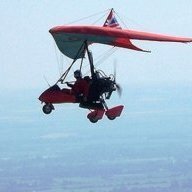
Steel tube for landing gear?
kasper replied to duncan_rtfm's topic in Aircraft Building and Design Discussion
Duncan, Sorry if this sounds like telling you what is obvious: 1. any round member in tension as its primary load path can be small diameter thin wall - its effectively a fat wire 2. if your round member is in compression as its primary load path you are in a balance - the greater diameter the thinner the wall that will work but you have to work out the collapse load of the tube - lots of fun engineering texts on that If you are basing your undercarriage on the HM single seat plans then from severe experience the tube sizes work fine and the tubes can be the mild steel per the drawings. In an undercarriage tripod: 1. the vertical member (the leg) is in compression and will end up the heaviest member 2. the cross member (wheel to centre of fusealge in the plane of the leg) is primary tension but with a strong secondary of compression - deals with side loads on the wheel 3. the drag link (wheel to fore/aft of the leg plane) is either compression if it goes rear of the leg (low load) or tension if it goes forward of the leg And to be frank - the main issue will be the quality of the joints and how they work - welding needs to be good and I would recommend understanding and doing the correct post weld heat treatment is more critical than steel selection - its more likely the joint will fail ahead of the round steel members. And remember - its a 300kg single seater you are building and its not going to landing at 90kts - basic simple undercarriage will suffice -
Been involved in design, fit and test on a BRS on a certified airframe in the uk and it’s no simple thing. The manufacturers instructions were quite easy and were the simplest part … getting it passed the BCARS testing was the time and expenses. thrusters are an orphan type that was approved to BCARS back in the day so RAAus tech doing a MARAP on it for 1 airframe is going to cost you dearly. from a couple of decades flying thrusters and the like plus being jump trained I would say 1 the thruster is very strong and too slow to worry me with with an airframe parachute. It’s not going to break in the air and if the engine stops your flight planning should mean you have landable options. 2 I’ve flown with a slim chute - not the one you are looking at but another - and once you are strapped into the chute, strapped into the seat I’d be near certain that IF the wing fails on a thruster you are not getting all the straps off and out away from the airframe before it’s too late. I think you are trying to fit an expensive solution to a non- risk … or another way is to say you are probably 99% not going to get the outcome you want from a slim pack from a thruster and if you go fit an airframe chute it’s high cost for minimal risk coverage with permanent load capacity penalty. I’d give it a miss and spend all that lovely free cash you then have in going out and getting a few dozen $100 burgers in the thruster.
-
And for those of us not into 70 years of being a nut ... 40 years + reference library + a job years while at Uni watching hundreds of hours of film and building an index to the archive - getting paid to watch old films and identify everything I watched was very nice.
-
Yes . a flying caravan ... which is sort of why I knew of it But also a very poorly designed and built one ... that aircraft is the prototype and suffered an in flight wing separation and fatal for the designer when flying back from Sun n Fun back in 2009.
-
Canadian - Explorer Ecoflyer (Or a Jabiru who ate all the pies 😉 )
-

OK - who is ready to do this in Australia?
kasper replied to SGM's topic in Student Pilot & Further Learning
Perfect - I'll claim mine for most number of Pou Du Ciel type aircraft flow by someone with the middle name Andrew ... COVID is real, I'll accept my certificate by post -
Yea it was opportunity. We have two houses on the farm and the one we don’t live it but store everything in is on the other side of the farm and set in 5 acres of gardens with over 200 trees. Can’t be seen from anywhere. Parents are not the problem - stupidity of youth is. They arrived home with paint on them and I found it less than an hour after they did it … I called the parents and they immediately said it was them. They were appalled and immediately have made good for the damage. I would not like to be the boys as I know their parents and they can do much worse than any court can. the house they damaged is being rebuilt by us later this year. Fortunately.
-
I wish they did not take interest in aircraft … this was 3 weeks ago at home. The delightful chaps who did this also went through the entire house and we have a collection of 23 swasrikas with nice SS insignia through the lounge room and kitchen less pleasant words through the bathroom and the bedrooms also have new decorations. The fact that the little shits are the 11yo and his mate from over the road is making it quite uncomfortable … they are not getting off lightly … and it’s not cheap to fix an entire house including furniture.
-
Both airframes were hand built without molds. Each was very different from each other in some ways bit both were very different as it came to the stall behaviour that Charles found to his great cost 17 min into the first flight of the second airframe. The 340 hours was on the original airframe - it was VERY small - Charles was VERY small - I barely fit into it and I was only 16 and under 5'8" when I shoehorned myself into it (never flew it - just sat in it). Second airframe had very different cockpit size and the rear wing / shroud and prop setup were changes as was the relative sizing of the control surfaces and control throws. Both airframes still exist - but the second was not repaired after the crash
-
Never a problem. LSA weight is going to be an issue for you in training and there is no avoiding that one. You are correct about getting your 3rd class then doctor - I got my 3rd class about 15 years ago and I maintained it with the option of own dr or avmed dr on renewals ... but it may not be asy for you to get the first 3rd cleared. Have fun and keep looking - the skycatcher was/is very limited on useful load and maybe if you can find something a bit more useful to do the training in you may then lok at single seat flying of a two seater - depends on what works for you in terms of motiation ... but at over 250lb ou are not ever really going to be taking a passenger very far if that is what will be your motivation.
-

Taildragger configuration question
kasper replied to duncan_rtfm's topic in Aircraft Building and Design Discussion
Duncan- I hate to disagree with other posters but I will for you. facthunter is not taking into account the unique operating regime of a flea - they CANNOT raise their tail in a takeoff/landing. They will AlWAYS be in three point attitude right up to liftoff and immediately after touchdown. the limit with the flea layout with a front engine is one of not tipping onto its nose when you get out. You will have your mains further forward than many will suggest for Ideal because it’s a weight criticality issue to have the tail wheel stay on the ground with the engine forward and your relatively large weight not in the seat. irs going to come down to angles and empty mass. Do your estimate weight n balance calcs for flight then redo them all for empty with the moment arms adjusted back to the landing attitude and determine where you need to put the mains to stay tail down. on the hm290fb Fred followed the plans and once it was complete there is a very close balance to nil. In tail down there are a couple of kilos weight on the tail wheel. Pick it up to level fuselage and the weight is nothing. Tip it nose down a few degrees and you have to hold the tail down. Ignore books of ideal angles - a tiny flea is limited by geometry and practically not having it tip on its nose when the seat is empty. -
And for clarity it was not a two seater that he crashed and was killed in but the pre-production / confirming prototype of the single seater. There never was a two seat airframe taken to prototype just the single seater x 2 and they were quite different in a couple of critical areas. absolute crying shame to die in a crash but the first ever flight of a new design in front of your family and friends is devastating


